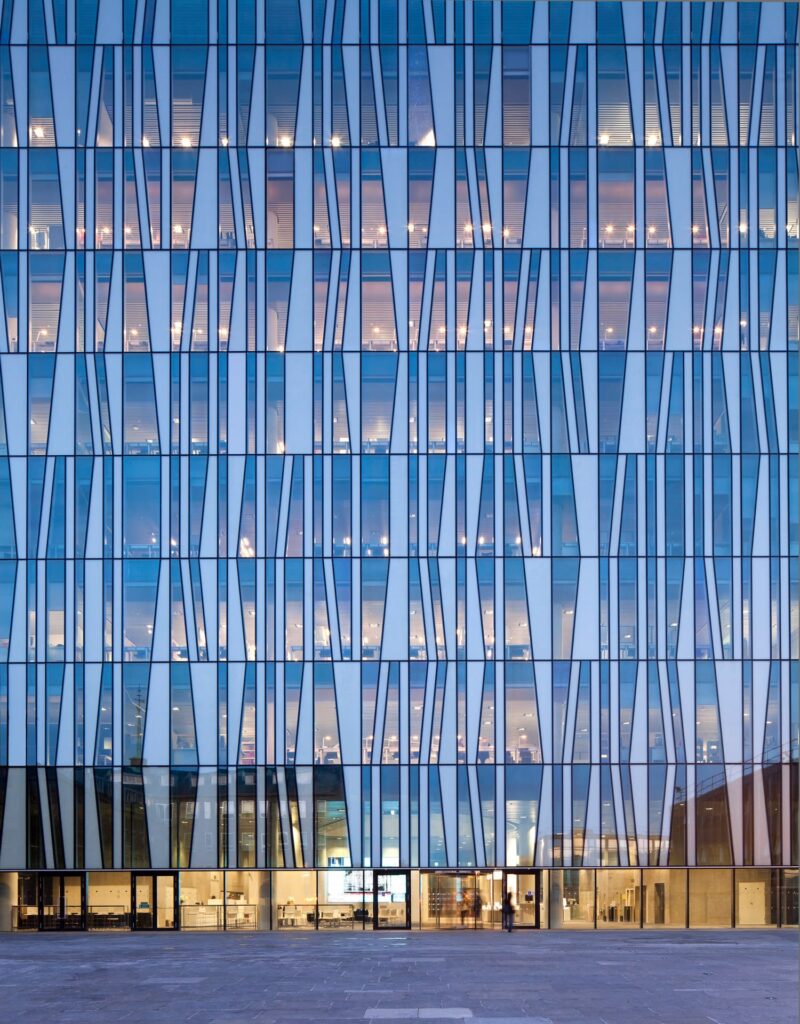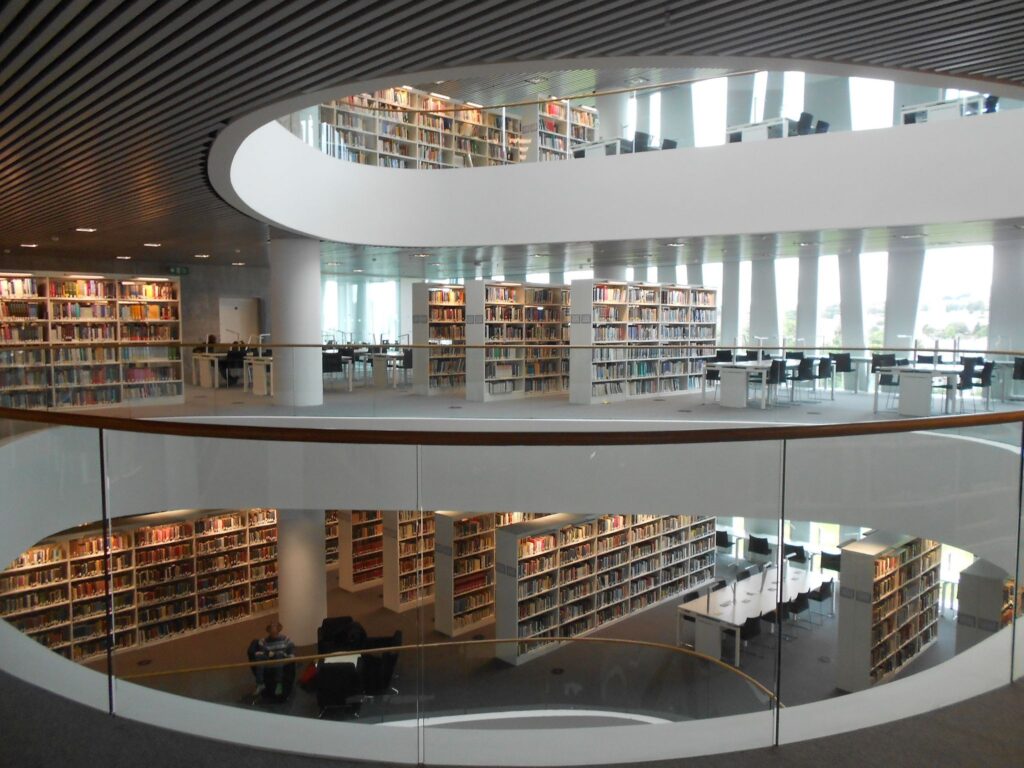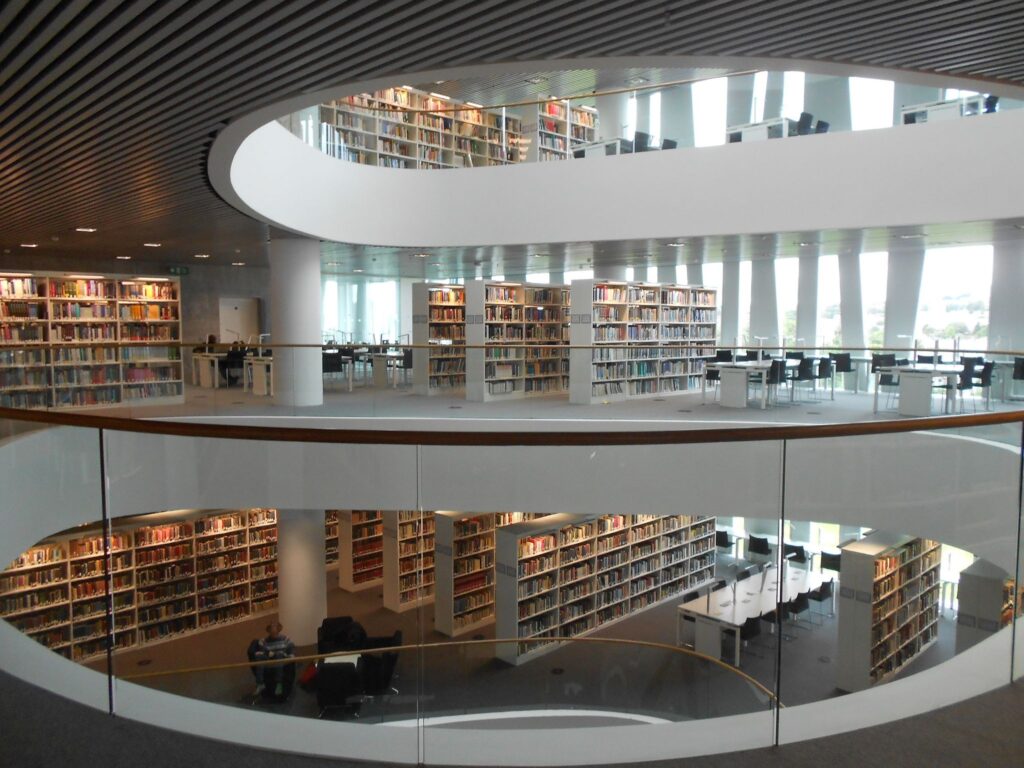University of Aberdeen New Library, Scotland, UK
Architects: Schmidt Hammer Lassen Architects
Client: Aberdeen University
Services: Concept Design, Scheme Design, Detailed Design and Technical Specifications
Location: Aberdeen, Scotland, UK
Awards: Aberdeen Civic Society Award 2012, RIBA (Royal Institute of British Architects) National Award 2013, RIAS (Royal Incorporation of Architects in Scotland) Award 2013
Established in 1495, the campus is the world’s fifth oldest English language university and the collection includes 250,000 books and manuscripts. Replacing the University’s former library from 1965, the 15,500 m2 new library accommodates 14,000 students with 1,200 reading spaces, archives, historical collections and a room for rare books. A ground floor lounge and café will host exhibitions, seminars and poetry readings. Above the common area, wavering contours are cut into each floor plate forming a central atrium which spirals through to the roof. With its learning and research environment for students, university staff, visitors and the public, the library functions as a meeting place and a cultural centre for the students of the University as well as the Aberdeen community. The acoustic design fit into this environment to maintain the idea of a communal space where break-out and study areas are connected vertically through the spiral atrium extending up to the eighth floor. The control of reverberance in such a big volume ensured a peaceful environment for concentration where conversations can also be easily kept avoiding noise build up within the volume and a good level of speech intelligibility is achieved for emergency announcements. In addition, a suitable envelope and internal sound insulation design ensured the control of noise ingress from the external environment as well as between spaces within the building achieving the suitable level of privacy and the achievement of the acoustic parameters requested by BREEAM Excellent. As part of the certification, noise from building services had been evaluated both to maintain the suitable level of background noise within the spaces and to reduce the likelihood of noise arising from fixed installations affecting nearby noise sensitive receivers.




